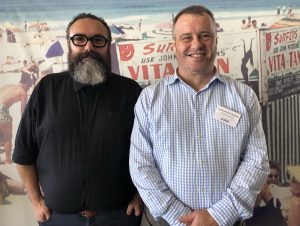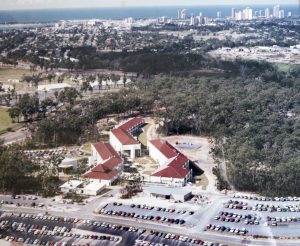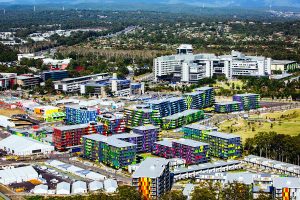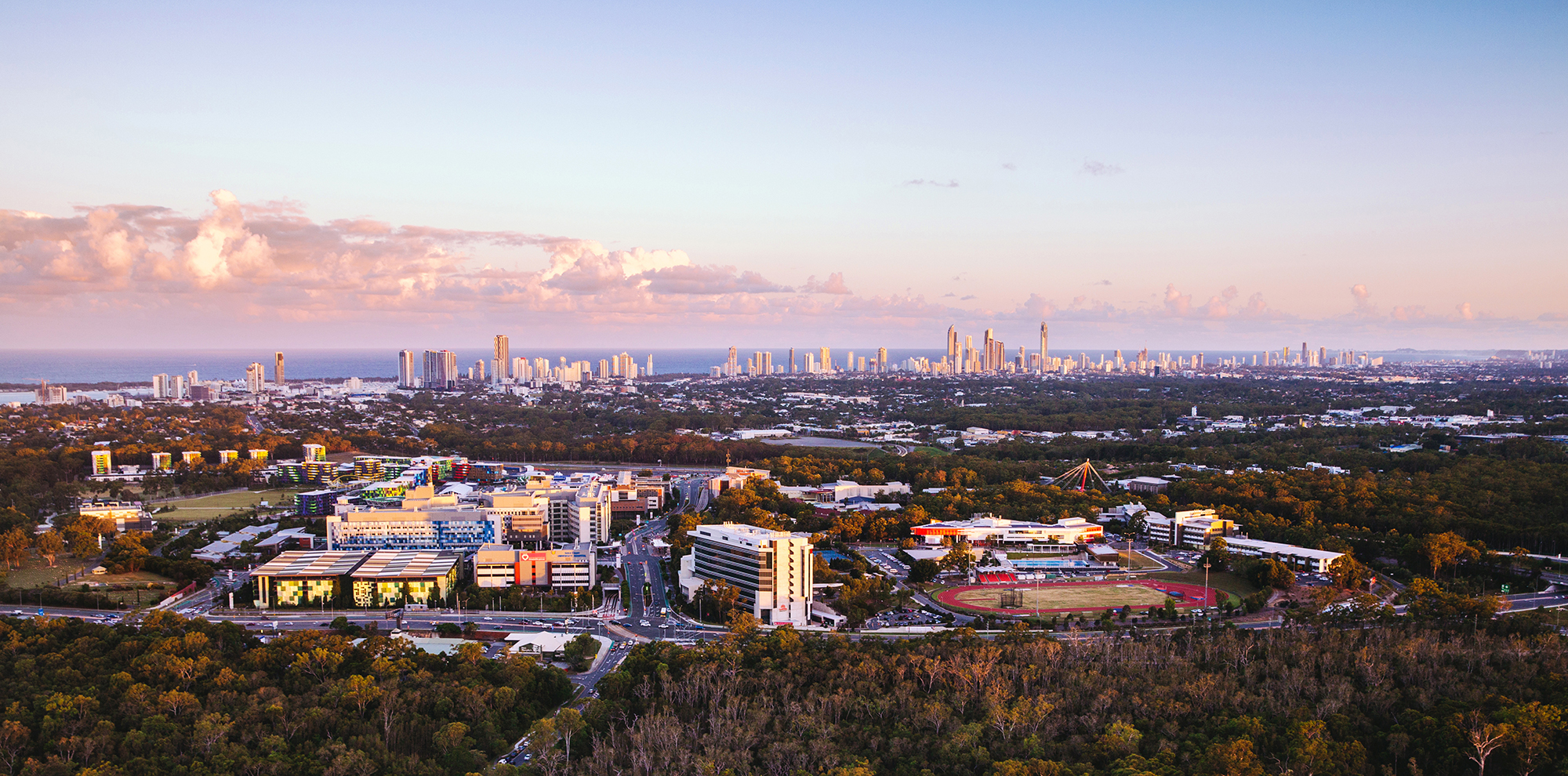As the Gold Coast 2018 Commonwealth Games draw to a close, marking a turning point for the Gold Coast, Griffith University’s leading cities expert says Australia’s emerging global city will ‘grow greater’ by staying true to its uniqueness, even as its persona constantly evolves.
Cities Research Institute Director Professor Paul Burton predicted the Gold Coast would move beyond being a ‘moody teenager’ and urged an end to comparisons and copy-catting, in favour of the leading coastal city maturing into its own skin.
Joining Jesse Judd, the Director of ARM Architecture, at a Destination Gold Coast “Then and Now” breakfast and media event, Professor Burton said the Gold Coast needed to harness the positive optimism the city is known for, and give up on some of its earlier mood swings.
“Maybe it means growing out of some of the less attractive traits of adolescence: the unpredictable mood swings, the pains associated with very rapid growth; the identity crises and the attempts to mask uncertainty and anxiety about the future by ignoring it, or by hoping it will just go away,” Professor Burton said.
“For instance everyone was worried about the city being a car park because of congestion during the Games and so there were strong warnings, and this flipped to business complaints of a ghost town because people got scared, so we need to be more even-keeled,” Professor Burton said.

Jesse Judd, the man behind the master planning of both the Athletes Village and the Gold Coast Cultural Precinct, including HOTA, argued that the city’s zest for change is its biggest asset.
“The Gold Coast’s most defining characteristic is change,” Mr Judd said.
“Constant evolution and redefinition is exciting because its unshackled from other historic cities of Australia which are defining themselves in the nineteenth century rather than in the future.”

The danger lies in comparison with some of the world’s great cities, especially in coveting what they’ve taken many decades and even centuries to develop.
“People have called our one light rail line a bit insignificant, but we must remember how the London Underground started — I believe our light rail will continue to be transformative for the Gold Coast,” Professor Burton said.
Both Professor Burton and Mr Judd argue against copying other places and using the marker of international brands and generic developments as a sign of the Gold Coast’s greatness — warning that globalization might make the city too ‘beige’.
“Colour and vibrancy. It’s something that we thought about when we built the Athletes Village and with our work for the cultural precinct,” Mr Judd said.
“That’s been part of Gold Coast’s culture in terms of signage and colour; colour of the beach and colour of people and how that can be relayed into built form.”
In architecture this translates to a playful public sculpture in the Athletes Village inspired by a rollercoaster and a masterplan for the cultural precinct that creates the DNA for organic growth, while retaining a bit of what Mr Judd refers to as ‘maverick mongrel’.

For great city-building, beyond capitalising on local distinctiveness, Professor Burton believes there must be continued planning and investment in the public realm as well as improved connectivity, both within the city and with the rest of the world and both physically and digitally.
“All great cities have these elements — distinctiveness, great public places, public transport and walkability, and importantly a real sense of welcome for new arrivals,” Professor Burton said.
Arriving himself from Bristol just over a decade ago, Professor Burton said better ways to help new residents settle would translate to their greater contribution to the city, especially in seeking to attract global companies and talent to the Gold Coast Health and Knowledge Precinct, a key legacy of the Games.
“The Gold Coast Health and Knowledge Precinct is a fantastic opportunity to show how we’re becoming a more mature city, expanding our health-related R&D capacity and creating another great place in the city. It’s an excellent example of building an athletes village that will turn quickly into the heart a Precinct where people will want to live, work, study and do business.”
